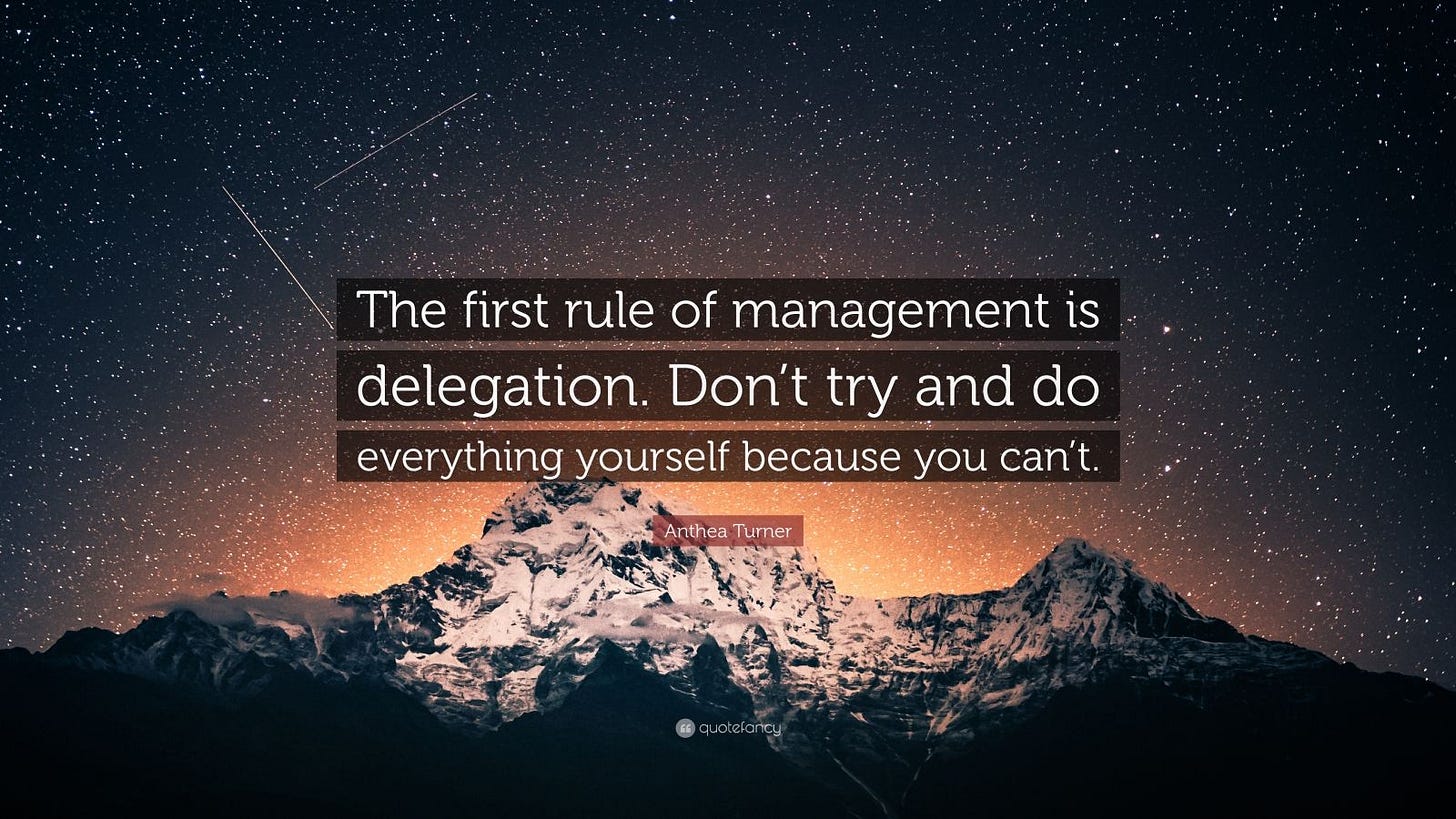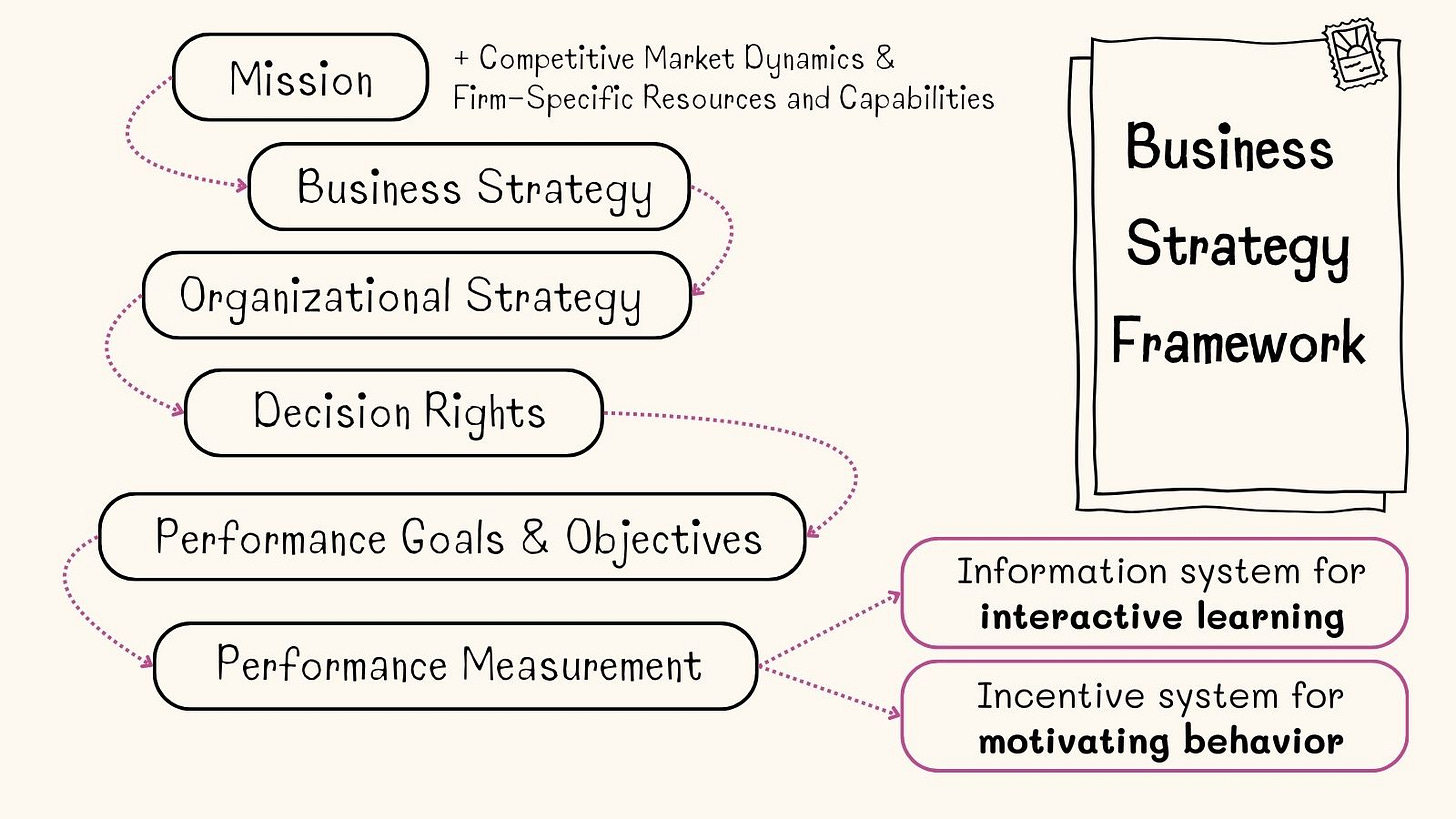How to design a decision-making allocation system
As my business grew, I realized our decision-making process needed a complete overhaul. Early on, everything funneled through me - every plan, every request, every decision. It worked when we were small, but as we scaled, this centralized approach became a massive bottleneck. Work processes in any organization can feel like a flowing stream, but when senior management, like me, is the narrowest part of the flow, everything slows down. It’s like a bottleneck in a bottle - where no matter how much water you pour in, the flow can’t keep up with the demand.
When decision-making is centralized at the top without adequate delegation, delays are inevitable. Even if your team is growing and processes are improving, if the approval system is stuck at one point, everything slows down. It leads to slower decisions, reduced responsiveness, and potential stagnation - not exactly the recipe for growth. I lived this firsthand and knew something had to change.
If you recall the Business Strategy framework which I discussed in the article “Building a Self-Leading Business”, the Decision Rights component sits at a crucial strategic level. It’s a key area that business owners must design before diving into goal setting or performance measurement at lower levels.
That’s when I began focusing on strategic delegation of authority. To solve the bottleneck issue, I had to shift the decision-making power closer to where the action happens. The key was creating a system that allowed the right people, at the right level, to make the right decisions. Here’s how I approached it:
Identifying the Bottlenecks
First, I looked at where things were getting stuck. What tasks or approvals were consistently delayed? These bottlenecks were clear signals of where I needed to distribute decision-making authority.Assigning the Right Tasks to the Right People
Delegation isn’t just about offloading work—it’s about making sure the right person is handling the task. Like solving a puzzle, I worked to align roles with strengths, ensuring that each piece fit where it could have the greatest impact.Empowering the Closest to the Problem
One of the biggest shifts was allowing team members closest to the issues to resolve them. This change was transformative. Instead of waiting for my approval, they could act quickly, keeping the workflow smooth and efficient. It also gave them ownership, which boosted their confidence and engagement.Building Organizational Resilience
I also addressed the risk of over-relying on certain key individuals. If one person holds all the knowledge or authority for critical decisions, their departure can disrupt operations. To prevent this, we implemented systems that ensured no single individual was indispensable.
Balancing this wasn’t easy. Too much centralization slowed us down; too much decentralization created inconsistency. But by setting clear guidelines on who decides what and ensuring decision-makers had the knowledge and accountability they needed, we struck a balance.
This process not only resolved the bottleneck issue but also transformed our workflows. Decision-making became faster, teams felt more empowered, and I could finally step back from being involved in every detail. It’s a work in progress, but letting go of control in a structured way has been one of the best decisions I’ve made for our growth.
That’s the “why,” and now you’re probably wondering, how can I actually build an effective decision-making allocation system? For me, the answer came through an app called Request in the Rework platform. This tool allowed me to design a streamlined approval system tailored to our needs.
To effectively deploy Request, I focused on creating a structured methodology for decision rights - clearly defining who makes decisions, under what circumstances, and with what level of autonomy. Here’s how I approached it:
1. Define the Scope of Decisions
The first step was identifying the types of decisions that drive the organization and categorizing them based on their nature and impact:
Strategic Decisions: High-level choices like entering new markets or launching products.
Operational Decisions: Department-level actions such as budget or resource allocation.
Tactical Decisions: Day-to-day decisions like task assignments or project timelines.
Once these categories were clear, I assessed the frequency and impact of each. High-impact, infrequent decisions often required more oversight, while routine, low-impact decisions were better delegated to teams for efficiency.
2. Set Clear Roles and Responsibilities
Next, I defined roles for each decision to ensure clarity across all levels:
Decision-Maker: The person or team responsible for making the call.
Advisor: Experts consulted for input.
Implementer: Teams or individuals tasked with executing the decision.
I also defined delegation levels, ensuring the right balance of autonomy and oversight. For instance, department heads could reallocate up to 15% of their budget without executive approval.
3. Develop a Decision-Making Flow
To streamline the process, I visualize how decisions flow through different roles (E.g. Direct manager, C-level, HR…) and when escalation to higher levels was required.
These frameworks reduced ambiguity, making it easier for teams to act confidently within their boundaries.
4. Communicate and Train
A decision-making system is only as good as the people using it. To ensure its success:
I established clear communication channels to share roles, responsibilities, and expectations.
I invested in training programs, helping employees and managers develop decision-making and risk-assessment skills.
5. Foster a Culture of Accountability
Accountability was a cornerstone of this system. I encouraged team members to take ownership of their decisions while implementing regular feedback loops. This not only strengthened decision-making skills but also built trust across the organization.
Digitizing Decision Rights with Rework Request
To standardize this system, I turned to Rework Request, a tool that allowed us to digitize decision-making and improve efficiency. Here’s how we structured it:
Scope of Decision (Request Type): Defined categories like Budget Allocation, Hiring, or Promotion Requests.
Request Form: Created templates that captured all necessary information for decision-making, ensuring approvers had everything they needed at a glance.
Roles and Responsibilities (Approver Type): Outlined the decision roles for each type of request. For example, a hiring decision involved the HR team, department heads, and final approval from the executive team.
Approval Flow: Designed step-by-step workflows, specifying the sequence of approvals required for each request type.
To help you understand better this approval system, let’s come back with our Monkey Business.
The Monkey Business Bottleneck Problem
Imagine running a monkey business in the jungle that specializes in selling bananas. Early on, as the founder, you handled every decision—whether it was deciding which bananas to sell, approving delivery routes, or setting prices. With only a few monkeys on the team, this centralized approach worked fine. But as the business grew, you hired more monkeys: Chimpanzees to innovate, Orangutans to manage logistics, and Gorillas to handle production. Suddenly, your approval system became a bottleneck. Every banana-related decision still had to go through you, and the flow of bananas slowed to a crawl.
Breaking the Bottleneck
To fix this, you decided to delegate decision-making to the monkeys closest to the action:
Identifying Bottlenecks:
You noticed delivery routes were often delayed because the Orangutans had to wait for your approval.Assigning the Right Tasks to the Right Monkeys:
Orangutans were empowered to decide the fastest delivery paths, while Chimpanzees got authority over banana innovation, such as creating banana popsicles or banana sushi.Empowering Problem-Solvers:
You trusted the monkeys handling specific areas to make quick decisions, rather than waiting for your green light. For example, Gorillas could independently adjust production levels based on demand.Building Resilience:
You also ensured no single monkey held too much authority. If a key Orangutan went on vacation, another could seamlessly take over the logistics.
Implementing a Digital Banana Request System
You then introduced a tool—let’s call it the Rework Banana Request System. Here's how it worked:
Scopes of Decision:
Monkeys used a clear framework for requests—logistics changes went to the Orangutans, while production adjustments were handled by Gorillas.Request Templates:
For example, when a new route needed approval, the template included details like banana types, delivery zones, and estimated travel times.Approval Flows:
The system automatically routed each request to the right monkeys for quick approval. No more bottlenecks!
With this structure in place, bananas moved faster than ever, monkeys felt empowered to make decisions, and you could finally focus on growing the business instead of approving every small task. Delegation wasn’t just a solution—it transformed the way your jungle business operated.
Hopefully this humorous example has helped you better understand Decision Power and inspired you to take the next step for your business!





